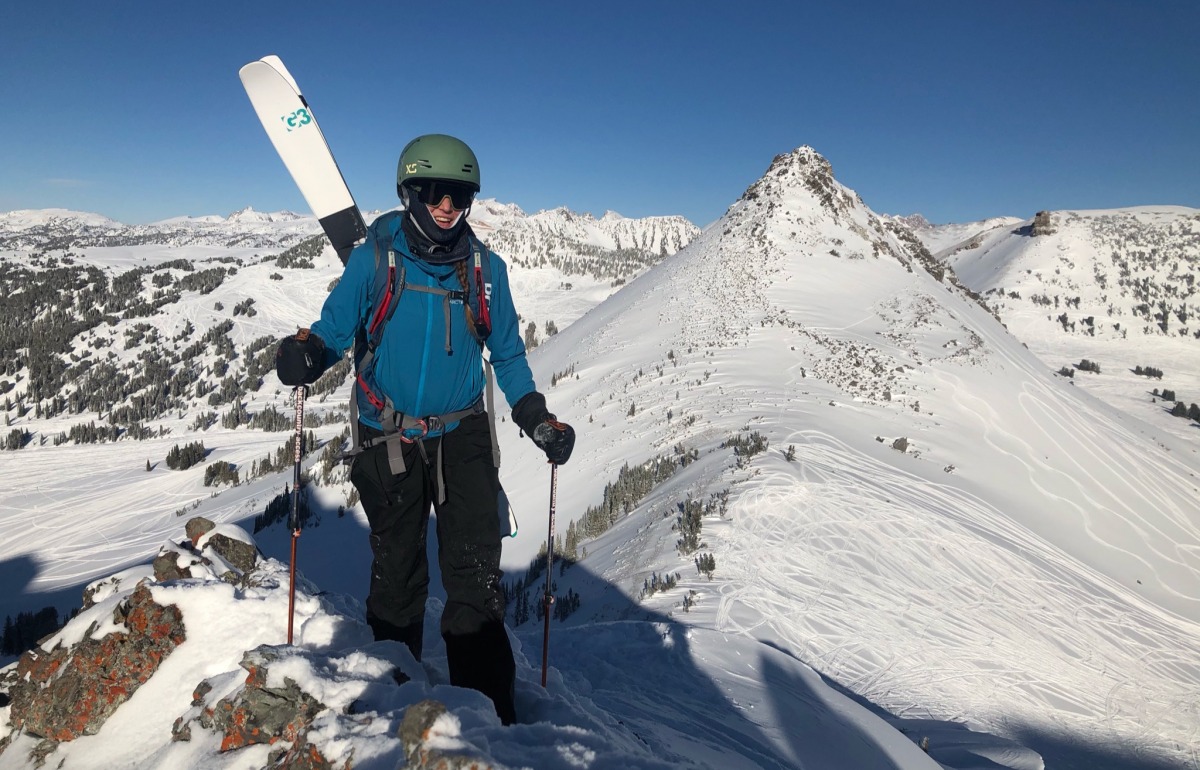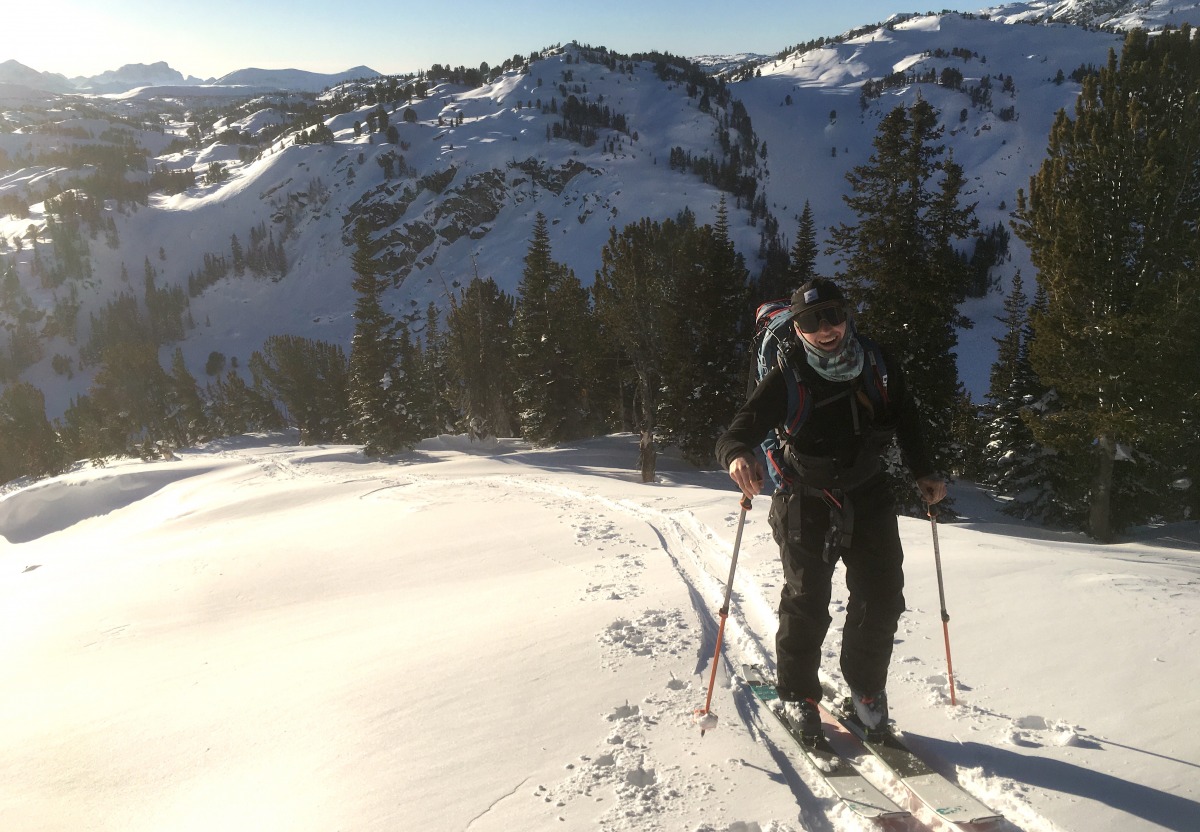When the G3 SLAYr 114 arrived at my front door in the spring of last year, I knew right away that we would become friends. Unfortunately, Covid delayed our experiences together during the 2020 spring season. Once the next winter came around this year, I patiently waited for the perfect powder day to try them. In true PNW fashion, the weather kept sending us rain…and well, more rain. (Did I mention it barely ever snows in the PNW? Oh but when it does…)
Eventually I gave up and took the skis out on an evening walk in what seemed to be absolutely horrid conditions. On my way up, I found myself dreading having to come down the slick chundery iceberg I appeared to be climbing. To my surprise, my descent on the SLAYrs was controlled and way more fun than I expected. I was really impressed by the stability of such a wide ski on such horrible snow; I thought it would be chatter city but that was not the case. In fact, it may be the least chatter I have felt on a ski this light.
In the time since, the SLAYrs and I have had a few more experiences in icy terrain, deep wet slush, tracked out packed snow and perfect blower pow. I must say, I really like how the ski performed in all of those conditions.
Overview
G3 SLAYr 114 Swift is a freeride specific backcountry ski. It is 114 mm underfoot, measuring ~1500g at 172 cm length, shaped with flat camber, early tip rise and early tail release. According to G3, this ski balances its lightweight, playfulness and downhill performance all at once while providing maximum fun. I 100% agree.
The SLAYr is built with polyurethane sidewalls and two tips-to-tail layers of titanal aluminum for both dampness and power. The ski is full carbon fibre construction which helps create a strong, light and torsionally stable ski. The main construction of the ski is Balsa wood core with 45 degree wood grain (the balsa is sawn with the wood grain at a 45 degree then laminated in opposing fashion to retain strength) creating a stiffer flex pattern from lightweight material, meant for playful skiing while still maintaining stability at higher speeds.
For those who are not as familiar with ski jargon, let’s translate the last paragraph a bit. Basically SLAYr was built to be a lightweight ski, without compromising too much on the stability of how it skis. The two aluminum layers help keep the ski grounded and avoid chatter, especially in more hardpack conditions. All the materials in the ski ensure that it is as light as it can possibly be.
A note on dampness: it’s the skis’ ability to absorb the natural vibrations from the snow, kind of like a shocks in a car or mountain bike. It helps the skier to not be as thrown off by uneven terrain or an unexpected change in snow conditions. Super light touring skis are often criticized for not being damp (hence my fear of chatter) because heavier materials typically help to create it.
With all that said, the ski is not magic, so the skier does play a big part in this equation. Naturally heavier skis are more damp, so for dampness to work correctly in a lighter ski, it is very important that the skier is driving the ski, not the other way around.
Last year, Alex Lee reviewed the SLAYr. This version, however, is the SLAYr Swift, which simply comes in shorter length and different color. This version also features a bit more camber in its construction. G3 specifically says that this is not a “women’s” ski, but a ski specifically designed for “smaller” backcountry users.
Skier profile and intentions
A little bit about me: I am a 5’9”, 150lb lady with 13 years of ski experience, skiing 50+ days a year. I began backcountry skiing seven years ago when I moved to the Seattle area. I am an aggressive skier who enjoys occasionally leaving the ground and making big wide turns. I ski mostly in the backcountry mixed with some resort skiing when it is too dangerous to adventure out. My everyday ski of choice is 110mm waist, early rise tip and tail, camber underfoot — a ski that floats in powder but also handles well in the crud. For boots, I use the Women’s Dynafit Hoji Pro Tour.
Because I was a resort skier first, I must admit I have a really hard time parting ways with heavier skis. I struggle with finding proper stability, control and fun in lighter skis. I often trade performance over weight, which admittedly makes me a slower uphiller. (But also stronger, am I right?)
Ski performance
My usual 1900g ski (110 mm width) was surely defeated by the 1500g SLAYr. With G3 Zed bindings with brakes, their weight is a total of 1774 g per ski. (Editor’s note: there were some questions about this weight as it differs from what’s on the G3 website. We’ve confirmed that Yulia’s skis were sample versions and not full production line skis.)
The ski obviously shines in powder — it’s wide, it’s light, it’s playful and fun — but also what wide ski is not fun in perfect powder? To me, a truly great ski is the one, even with the wide waist, can be used for more than just that heavenly pow day. In my opinion SLAYr Swift fits that profile: for someone who is used to a wider ski (looking at you, PNW skiers) and who doesn’t have an infinite ski budget, I’d even go so far as to say the SLAYr 114 Swift can be your one quiver ski. Paired with G3 Zed 9 bindings, this ski is actually almost 200 grams lighter (per ski) than my 97 Black Crows Freebird Camox with G3 Ion Lt (my spring touring ski) and it skis just as well in the same conditions.
A few days into using the skis, I noticed that they had this magic way of sticking together perfectly. That is when I realized that I had completely missed the memo about the magnetic contact points – the SLAYrs have magnets at both tip and tail which help snap the skis together. I definitely am not planning to slim down my Voile strap collection, but I must say the magnetic contact points on the skis is a very neat feature. At times to this day find myself confused as to why the skis are all of a sudden sticking together, but this is really nice especially when transitioning into booting.
SLAYr vs. SLAYr Swift
Alex (who reviewed the SLAYr last year) and I are different skiers, ski in different snowpacks, have different gear preferences, it was exciting for me to read his review as I was writing mine! Below find a few differences that I discovered in the SLAYr Swift compared to Alex’s review.
Alex mentioned that he thought the ski wasn’t necessarily beginner friendly. I didn’t find that it was hard to drive the ski – so I actually think that this would be an okay upper level beginner or intermediate ski. After 5 days of hard skiing in a row, I did notice that the ski was harder to drive if I was not forward in my boots.
Alex also noted that hop turns on such a light and wide ski would be challenging. I on the other hand found the ski really easy to maneuver; I hopped down a couloir in breakable crust the other day and it was as delightful as that skiing could have been. I do want to note that the turning radius on the 172 length ski is smaller than the 185 (20.5m vs 22.7m) . I enjoyed it in treed terrain where I had to make quick turns – and of course the ski carved phenomenally on larger open bowls of snow, providing an awesome sense of float due to its wide base.
Alex put the SLAYr to test and felt them wash out a bit on real hardpack. I haven’t felt the tails wash out, but haven’t quite taken the ski to the max speed on hardpack yet. I found it to be surprisingly stable in all ways I pushed it, except for the one time my legs were really tired.
In summary
The SLAYr slays in powder, but I argue that it slays in other conditions too. Other skis that have a similar profile to these, where they are light and not too chattery, usually feel like stiff pieces of wood and metal with no fun — but the SLAYr offers that playfulness that not a lot of wide light skis do. If you don’t mind the wider ski, SLAYr will keep you feeling good on the uphill, will take good care of you on the downhill no matter what conditions — plus, you are always ready for that sneaker pow day just in case in snowed two feet instead of the forecasted two inches.
STATS
Available lengths: 172cm, 178cm
Dimensions: 143/114/128
Turn radius: 20.5 m (172cm)
Core: Paulownia, poplar
Profile: rocker, camber, rocker
WildSnow Girl, Julia Dubinina, is a weekend warrior chasing snow in winter and sun in summer. A lover of long tours and steep skin tracks, she explores the Pacific Northwest and beyond. When she is not out adventuring, she is working away at her corporate desk job for a software company to make her next adventure happen.




